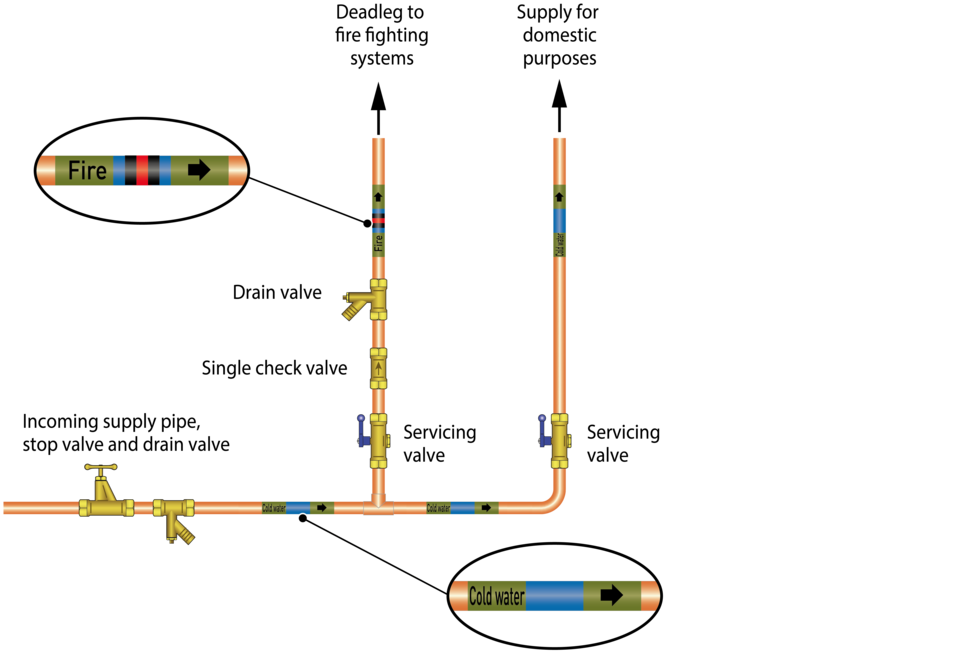Backflow Protection: FAQs
What backflow protection is required for fire suppression systems?
Supplied direct from mains
Where fire suppression systems are supplied directly from a supply or distributing pipe conveying water to be used for domestic purposes (i.e. water used for drinking, bathing, cooking or washing.) backflow protection should be installed on the fire suppression system pipework as close as is reasonably practicable to the point of connection to the supply or distributing pipe.

Fire suppression systems without additives are typically considered to a fluid category 2 risk. To be compliant a backflow protection rated to at least fluid category 2 must be installed on the branch supplying such systems as shown above.
Fire sprinkler systems using additives (e.g. rust inhibitors) are typically considered to be a fluid category 4 risk. To be compliant a backflow protection rated to at least fluid category 4 must be installed on the branch supplying such systems.
Supplied from dedicated storage
A storage cistern which is solely dedicated to supplying a fire suppression system is considered to be a fluid category 5 risk. To be compliant a backflow protection rated to at least fluid category 5 must be installed; typically a Type AB air gap is used for this purpose.
Furthermore, as the pipework supplying the storage cistern is considered to be a fluid category 2 risk, backflow protection rated to at least fluid category 2 must be installed as detailed above.
For further information about design and installation of fire suppression systems contact the local water undertaker.
Feedback
To improve this information please give us your feedback >
Disclaimer
Uncontrolled if downloaded. This is informative, non-statutory guidance and intended for general guidance purposes only; it is subject to change.
Compliance with this information should not be relied upon as guaranteeing no enforcement action will be taken by water undertakers. Water Regs UK accepts no liability for loss, indirect or consequential loss arising from or in connection with this guidance document.
